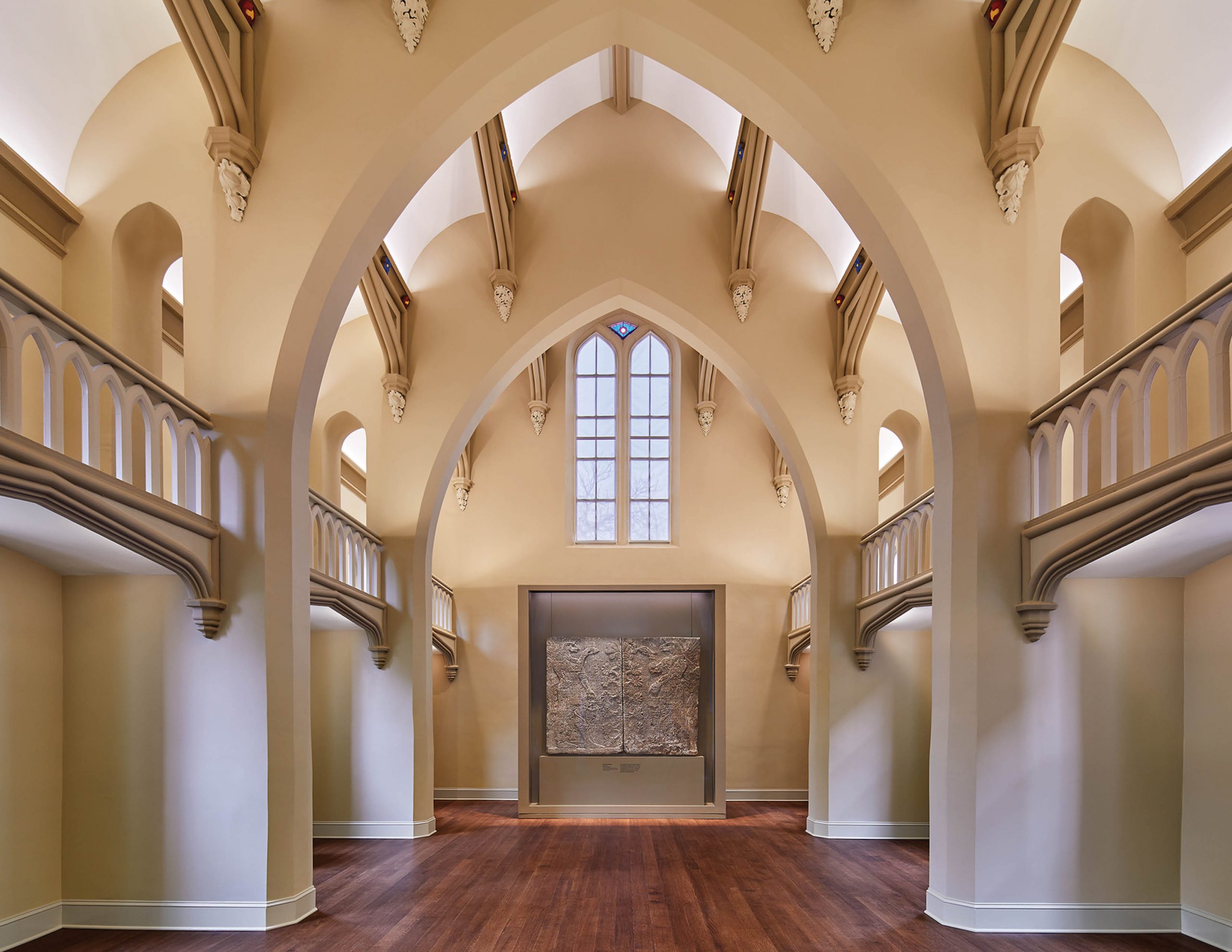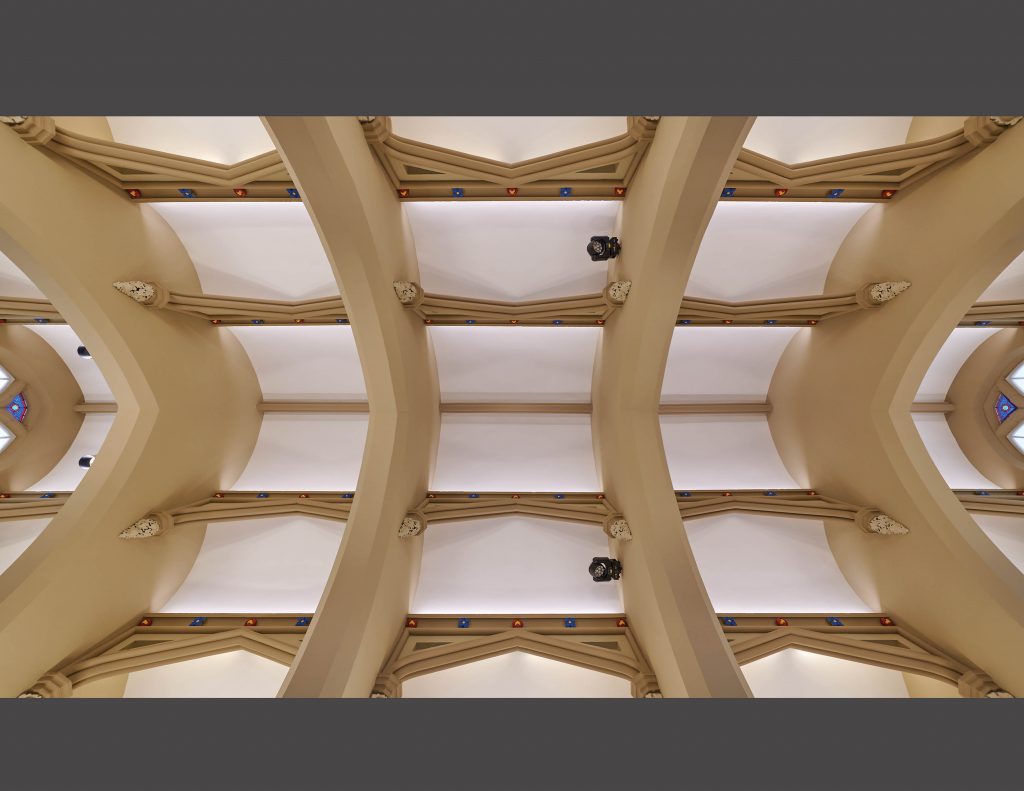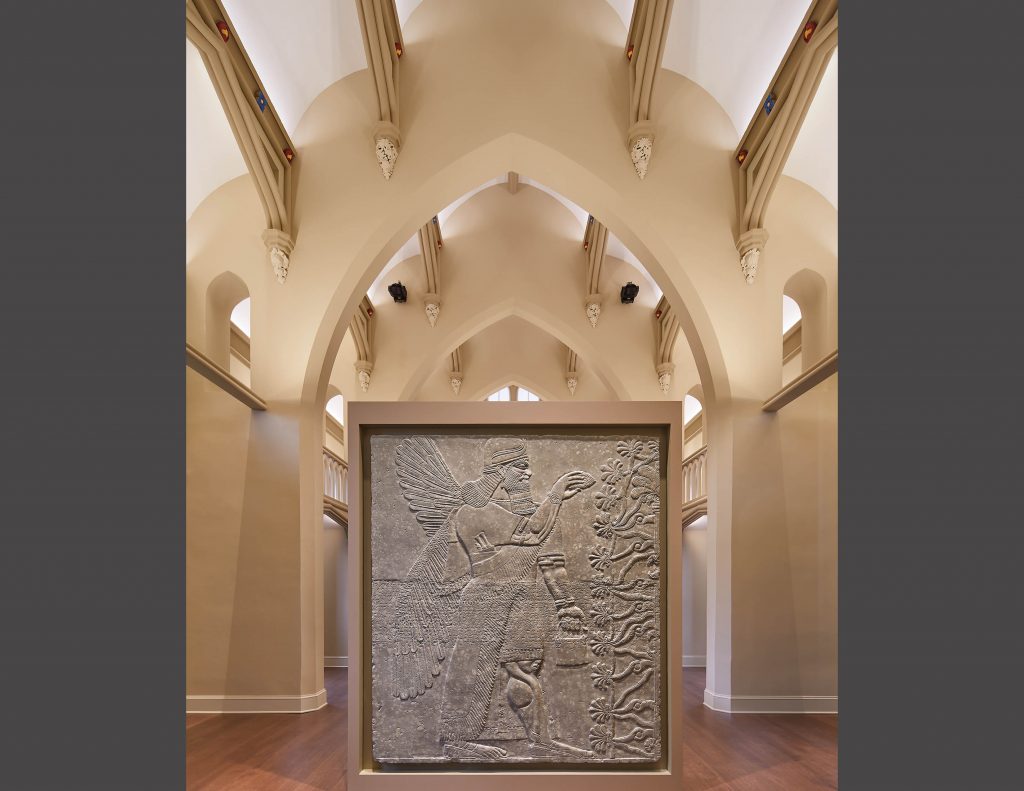
Francis Scott Key Hall, located on the campus of the Virginia Theological Seminary in Alexandria, Virginia, was officially dedicated and renamed Bicentennial Hall in November of 2019. Photo by Anice Hoachlander.
The adaptive reuse and renovation of the building was designed by Bowie Gridley Architects (BGA) in association with exhibit designer, Richard Molinaroli. The building was renamed in celebration of the Seminary’s 200th year. Throughout its history, the building has been used as a library, dining hall, and most recently served as classroom space. The renovated hall now serves as a flexible meeting room and gallery space which is home to the Seminary’s two gypsum slab relief carvings from the Assyrian civilization, acquired by the school in the 1920s.

The BGA team designed the pre-civil war era building renovation as a multi-purpose and display room and worked with engineers to completely replace the mechanical system to comply with 21st-century museum standards. Structural engineering included foundation reinforcement and floor replacement of the nearly 200-year old building to support the massive weight of the relief carvings and their display cases. Renovations also included all new electrical systems with the addition of museum quality lighting. Richard Molinaroli worked with the design team on the interior finishing, exhibit display cases, lighting, and signage panels. The entire design team consisted of 2RW Consultants, Inc., Linton Engineering, LLC, R+A+M Design Studio, Allied Telecom Group, Stroik Lighting Design, and General Contractor, Harry Braswell, Inc.
As the nearly 200-year old floor structure was inadequate to support the weight of the new museum display cases and exhibits, significant improvements were engineered for a new wood floor atop a concrete slab and metal deck. The existing crawl space was enlarged to provide proper space for the building’s new mechanical and electrical equipment. Existing foundations were underpinned, and new foundations created to support the display cases.
The existing 2-by-8 wood floor joists were salvaged and milled into wood flooring that will be re-used elsewhere on the seminary’s campus. Channels were carved out of the existing plaster walls to hide the numerous routes of electrical conduit needed for the building lighting.

The two Gypsum Assyrian relief panels are originally from the Temple of Nimrud near Mosul, Iraq. The site was excavated between the 1840s–1850s by the British archaeologist Henry Layard. The panels were acquired by a missionary associated with the Virginia Theological Seminary.
The lighting design highlights the curved ceiling and decorative corbels and arches and creates a soft glow to the interior space without any of the lighting visible. Lights are hidden behind the arches, cornice, balconies, and handrails. Special attention was given to touching up the existing plaster ceiling and walls to address plaster spalling. Small imperfections remain to retain the character of the 200-year old building.
- Two-sided glass display case housing the original gypsum slab relief carvings allowing the backside of the carvings to be seen.
- New shafts were required for mechanical air return (from balcony level to crawls space).
- The Hall was designed as a multi-functional space for lectures and presentations in addition to showcasing the relief carvings.
- Decorative corbels and arches hide museum quality lighting.
- Balcony handrails also hide museum quality lighting.
- Display case holding a replica gypsum slab relief carving from the Assyrian civilization; on the opposite side is a drop-down door screening a media monitor for lectures and presentations.
- Enlarged crawl space houses the main mechanical and electrical equipment.
About the Contributor
Gary A. Raymond is the marketing manager for Bowie Gridley Architects located in Washington, D.C.
